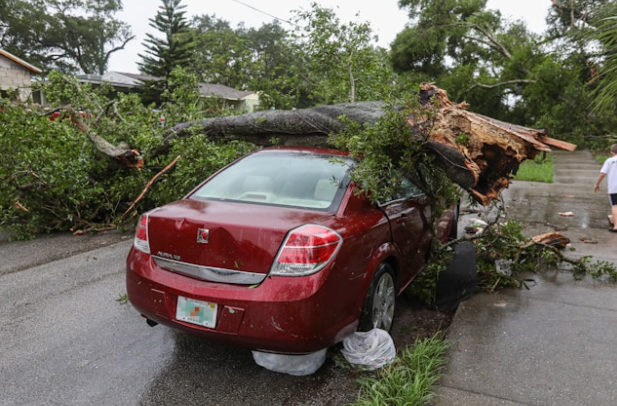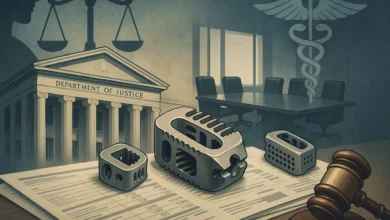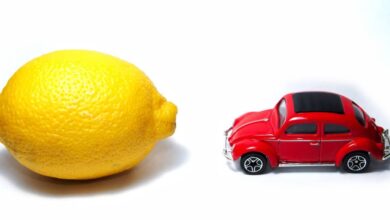Everything You Need to Know About Single-Vehicle Accidents

When most people hear about car accidents, they often imagine collisions involving two or more vehicles. However, single-vehicle accidents—where only one car is involved—are surprisingly common and can be just as devastating. From veering off icy roads to striking a fallen tree, these incidents occur for many reasons and often lead to confusion about fault, insurance claims, and legal rights.
In this guide, we’ll explore everything you need to know about single-vehicle accidents: what causes them, how liability is determined, how insurance companies handle these claims, and what steps to take if you’re involved in one.
What Is a Single-Vehicle Accident?
A single-vehicle accident involves only one vehicle. It typically occurs when a driver loses control and hits a stationary object or obstacle. Common examples include:
- Colliding with a guardrail, pole, or tree
- Hitting a pedestrian or animal
- Sliding into a ditch
- Rolling over
- Running off the road due to poor weather or road conditions
Although there’s no other driver involved, these crashes can still result in severe injuries, property damage, and complicated insurance claims.
Common Causes of Single-Vehicle Accidents
Single-vehicle accidents may appear straightforward, but they often involve multiple factors. Some of the most frequent causes include:
1. Distracted Driving
Taking your eyes off the road for just a few seconds to read a text or adjust the radio can result in a crash. Distractions reduce reaction time and spatial awareness, increasing the chance of hitting a fixed object.
2. Speeding
Driving too fast, especially on winding roads or in poor weather, can lead to loss of control. Even if no other vehicles are around, excessive speed increases the risk of veering off the road or rolling over.
3. Weather Conditions
Snow, ice, fog, and rain all contribute to reduced visibility and slippery surfaces. Many single-vehicle crashes occur during or shortly after adverse weather conditions.
4. Driver Fatigue
Falling asleep at the wheel or becoming drowsy reduces reaction time and awareness. Fatigue is a major factor in single-vehicle highway accidents, especially during long-distance travel.
5. Drunk or Impaired Driving
Alcohol or drug impairment affects coordination, judgment, and perception. Impaired drivers are more likely to lose control of their vehicle—even on empty roads.
6. Mechanical Failure
Tire blowouts, brake failure, or steering issues can cause a driver to crash even if they were operating the vehicle responsibly. While these incidents may not be the driver’s fault, they still require investigation.
7. Poor Road Conditions
Potholes, debris, missing signage, and poorly lit roads can all contribute to single-vehicle accidents. In some cases, municipalities or contractors may share liability for poor road maintenance.
Who Is at Fault in a Single-Vehicle Accident?
In many cases, the driver of the vehicle is assumed to be at fault. However, fault isn’t always straightforward. There may be other contributing factors or third parties involved. Here are a few scenarios:
- Defective Parts: If a mechanical failure caused the accident, the manufacturer or repair shop could be held liable.
- Poor Road Maintenance: If the accident was due to a large pothole or missing sign, the municipality might share fault.
- Avoiding Another Vehicle or Animal: If a driver swerves to avoid a jaywalker, animal, or reckless driver and crashes, evidence (e.g., dashcam footage or eyewitnesses) might shift the blame.
Determining fault often requires a detailed investigation, including photos, witness statements, and accident reconstruction.
What to Do After a Single-Vehicle Accident
Being involved in a single-vehicle crash can be disorienting and stressful. Here are the immediate steps to take:
1. Check for Injuries
Ensure that you and any passengers are safe. If anyone is injured, call 911 right away.
2. Move to Safety
If the car is still operable, move it out of harm’s way. Turn on hazard lights to alert other drivers.
3. Call the Authorities
Report the accident to the police, especially if there is injury, significant damage, or public property involved.
4. Document the Scene
Take photos of the damage, road conditions, weather, and surroundings. This documentation will help with your insurance claim or potential legal action.
5. Notify Your Insurance Company
Let your insurance provider know about the incident. Be honest but cautious with the details you provide. Some policies require immediate notification to remain valid.
6. Seek Legal Advice
If you’re unsure about your liability or believe other factors contributed to the crash, speaking with a personal injury or accident lawyer can be beneficial. They can help protect your rights and navigate complex claims.
Insurance and Single-Vehicle Accidents
Many drivers are surprised to learn that single-vehicle accidents can still be covered under their insurance—depending on the type of coverage they carry. Superior Collision Inc. provides expert repair services that can restore your vehicle to pre-accident condition, giving you peace of mind after your claim.
- Collision Coverage: This pays for repairs to your vehicle, even if you’re at fault.
- Comprehensive Coverage: This applies when a vehicle is damaged by something other than a collision, such as an animal strike or falling object.
- Liability Coverage: Typically doesn’t apply to your own vehicle damage in a single-car crash but covers injuries or damage to others.
Filing a claim may result in increased premiums, particularly if you’re deemed at fault. It’s important to weigh repair costs against potential insurance rate hikes.
Legal Considerations
While single-vehicle accidents may seem simpler from a legal perspective, they can still become complex. Legal representation may be necessary if:
- You were injured due to faulty car parts
- Poor road conditions contributed to the crash
- A third party, such as a pedestrian or another driver, was involved indirectly
- You’re being denied a claim or blamed unfairly
In these cases, it’s advisable to consult with a legal professional who specializes in personal injury or motor vehicle accident law.
If you’re in Ontario and experienced a single-vehicle crash with injuries or unclear fault, you may want to contact for car accident lawyer Oshawa to better understand your options and ensure you’re treated fairly.
Final Thoughts
Single-vehicle accidents may not involve other cars, but their consequences can be just as serious. From minor fender benders to severe rollovers, these incidents require attention, documentation, and sometimes legal assistance. Whether you’re dealing with injuries, damaged property, or insurance complications, understanding your rights and responsibilities is essential.
By driving safely, maintaining your vehicle, and staying alert, many of these accidents can be prevented. But when they do occur, having the right information and support can make all the difference in how you recover—both physically and financially.




